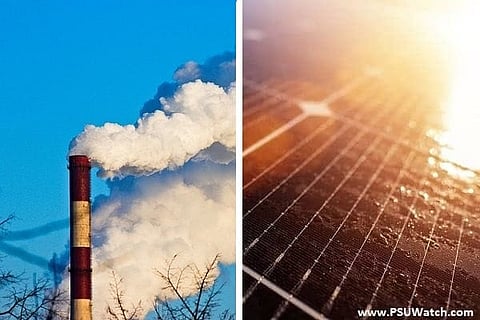
- News Updates
- PSU Watch
- Defence News
- Policy Watch
- हिन्दी न्यूज़
- Jobs Watch
- States News
- Event News

New Delhi: The Budget 2024-25 has laid out a multi-pronged roadmap for India’s energy transition journey, placing efficient thermal power plants, Pumped Storage Projects (PSPs), nuclear energy, a roadmap for hard-to-abate industries and a taxonomy for climate finance as priorities. Presenting the Union Budget on Tuesday, Finance Minister Nirmala Sitharaman said, “In the interim budget, I had announced our strategy to sustain high and more resource-efficient economic growth, along with energy security in terms of availability, accessibility and affordability. We will bring out a policy document on appropriate energy transition pathways that balances the imperatives of employment, growth and environmental sustainability.”
A day ago, the Economic Survey 2024-25 stressed the central role of coal in India’s energy mix for the next two decades, stating that it will continue to meet India’s base load power requirements. India’s power demand is poised to grow several times and to meet this demand, India is planning to add 80 GW of thermal power by 2032. Keeping this in mind, the Budget for 2024-25 has placed a lot of emphasis on the development of efficient thermal power plants which employ the Advanced Ultra Super Critical (AUSC) technology. “The development of indigenous technology for Advanced Ultra Super Critical (AUSC) thermal power plants with much higher efficiency has been completed,” said the Finance Minister. A joint venture between NTPC and BHEL will set up a full-scale 800 MW commercial plant using AUSC technology. The government will provide the required fiscal support, said the minister. “Moving forward, the development of indigenous capacity for the production of high-grade steel and other advanced metallurgy materials for these plants will result in strong spin-off benefits for the economy,” she added.
Presenting the 2024-25 Budget in the Lok Sabha, the Finance Minister said that the government will collaborate with the private sector for setting up small modular reactors (SMRs) and undertaking research and development on SMRs and newer technologies for nuclear energy. “Nuclear energy is expected to form a very significant part of the energy mix for Viksit Bharat,” said the minister. The R&D funding announced in the interim budget will be made available for this sector, Sitharaman added.
A policy for promoting pumped storage projects will be brought out for electricity storage and facilitating smooth integration of the growing share of renewable energy with its variable and intermittent nature in the overall energy mix, said the minister. A pumped-storage project involves two reservoirs, one on top of a hill and another at the bottom. Excess electricity is used to pump water uphill to the upper reservoir. When electricity demand spikes, the water is released to the lower reservoir through a turbine, generating power. This system is particularly significant given the unpredictable nature of solar and wind energy.
The Finance Minister said that a roadmap for moving the ‘hard-to-abate’ industries, like steel, cement, iron, chemicals etc, from ‘energy efficiency’ targets to ‘emission targets’ will be formulated. Appropriate regulations for transition of these industries from the current ‘Perform, Achieve and Trade’ mode to ‘Indian Carbon Market’ mode will be put in place. “A taxonomy for climate finance will be developed to enhance the availability of capital for climate adaptation and mitigation,” Sitharaman said.
An investment-grade energy audit of traditional micro and small industries in 60 clusters, including brass and ceramic, will be facilitated, said Sitharaman. “Financial support will be provided for shifting them to cleaner forms of energy and implementation of energy efficiency measures. The scheme will be replicated in another 100 clusters in the next phase,” said the minister.
Aarti Khosla, the director of independent think tank Climate Trends, said the focus on critical minerals, a policy for pumped-storage projects and the decision to develop a policy document on energy transition pathways is laudable.
“However, it remains to be seen how the role of nuclear power in India's energy mix takes shape. The budget lacks timelines for announcements on taxonomy, carbon-pricing mechanisms and detailed strategies for mobilising climate finance for adaptation and mitigation efforts,” she said.
Suranjali Tandon, associate professor, National Institute of Public Finance and Policy, said the industry and investors have been demanding a taxonomy and a transition pathway as guidance for the flow of finance and reorientation of economic activity. The announcements of a carbon market, taxonomy and transition pathways mark significant progress in planning towards net zero in 2070, she said.
(PSU Watch– India's Business News centre that places the spotlight on PSUs, Bureaucracy, Defence and Public Policy is now on Google News. Click here to follow. Also, join PSU Watch Channel in your Telegram. You may also follow us on Twitter here and stay updated.)
